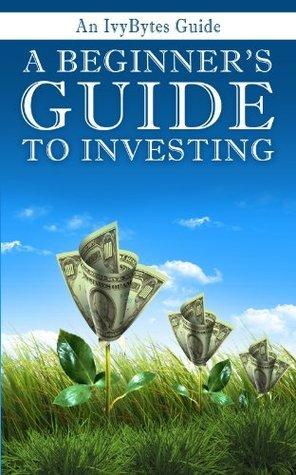Last updated on 2025/07/14
A Beginner's Guide To Investing Summary
Alex H. Frey
Simple strategies for financial growth and security.
Last updated on 2025/07/14
A Beginner's Guide To Investing Summary
Alex H. Frey
Simple strategies for financial growth and security.
Description

How many pages in A Beginner's Guide To Investing?
100 pages
What is the release date for A Beginner's Guide To Investing?
Investing can often seem like a daunting endeavor reserved for financial experts and seasoned traders, but "A Beginner's Guide to Investing" by Alex H. Frey demystifies the process and reveals that anyone can become a savvy investor. With clear, practical advice and relatable examples, Frey takes you on a journey from the fundamentals of saving and budgeting to understanding stocks, bonds, and the importance of diversification. This guide not only equips you with essential knowledge but also empowers you to make informed financial decisions that can pave the way toward achieving your long-term goals. Whether you’re looking to grow your wealth for retirement, a major purchase, or simply to ensure a more secure financial future, this book is your friendly companion in navigating the world of investing.
Author Alex H. Frey
Alex H. Frey is a seasoned financial writer and investment expert known for his ability to demystify the complexities of investing for everyday individuals. With a strong background in finance and a passion for educating others, Frey has dedicated his career to empowering novice investors with the knowledge and tools necessary to navigate the financial markets confidently. His approachable writing style and practical insights have made his work accessible to a broad audience, establishing him as an authoritative voice in the field. In "A Beginner's Guide to Investing," Frey draws on his extensive experience to provide practical advice and strategies that help beginners embark on their investment journeys with confidence.
A Beginner's Guide To Investing Summary |Free PDF Download
A Beginner's Guide To Investing
chapter 1 | How to double your money every seven years
In the exploration of the journey toward financial security, one of the most profound concepts introduced is the power of compound interest, which can transform small initial investments into substantial wealth over decades. This phenomenon is often overlooked by many investors who either start saving too late or fail to achieve the average rate of return due to various pitfalls, such as high fees or poor investment choices. The consequences of financial illiteracy can be severe, costing the average investor upwards of $1 million across their lifetime. 1. The Parable of Jill and Average Joe reveals a stark contrast between two individuals with similar backgrounds and earning potential. Both graduated from college at the same time, began their careers earning $40,000 a year, and planned for retirement. Each committed to saving 10% of their annual income throughout their working lives, only pausing for three years in their mid-30s due to family obligations. However, a crucial difference lay in their investment strategies: Jill began saving immediately upon graduation, while Average Joe procrastinated for eight more years. Furthermore, Jill opted for a simple index mutual fund that tracked the stock market, while Average Joe engaged in frequent trading, often influenced by tips from others, ultimately achieving average market returns. When they both retired at 65, the disparity in their accumulated wealth was staggering. Jill had successfully saved $967,000, allowing her to enjoy a comfortable retirement with annual income from investments of around $84,000. In contrast, Average Joe’s procrastination and mismanaged portfolio resulted in only $309,000—enough to yield a mere $15,000 annually, forcing him to rely heavily on Social Security. 2. At the heart of this difference lies the miracle of compound interest. Savings invested in the stock market have typically yielded an average annual return of about 10%. However, the principle of compound interest means that not only does the initial investment grow, but the gains from that investment also generate additional returns. For instance, an investment of $100 growing at a 10% rate would yield $110 after one year, and in the following year would not just grow the base amount but also the first year's gains, leading to exponentially increasing returns over time. This effect accentuates the value of starting to invest early, as seen with Jill’s ten-year advantage over Average Joe. 3. However, many investors struggle to realize this ideal due to two primary factors: fees and poor investment decisions. While Jill kept her fees low, Average Joe lost significant returns to various financial intermediaries that took around 2% of his portfolio annually. This erosion of capital resulted in Average Joe’s final portfolio being approximately $123,000 less than it could have been, had he not incurred those fees. Meanwhile, Average Joe's tendency to react emotionally to market fluctuations led him to make ill-timed investments, exacerbating the gap in returns compared to Jill's steady approach. 4. The crux of the matter is financial illiteracy. Average Joe's lack of knowledge and confidence hindered him from managing his assets effectively, ultimately costing him a substantial amount of wealth over his lifetime. Jill’s commitment to understanding her finances at an early age allowed her to make informed investment choices, while Average Joe's reliance on advisors caused him to overlook the long-term implications of seemingly small fees. The opportunity cost of this illiteracy cannot be overstated: investing a small amount of time to learn about personal finance could potentially equate to hundreds of thousands of dollars in savings. In conclusion, the case of Jill and Average Joe serves as a cautionary tale. Financial success is often less about the amount saved and more about how and when that money is invested. Understanding the principles of compound interest, maintaining control over investment choices, and consistently prioritizing saving, can drastically alter one's financial trajectory. As this chapter illustrates, taking the time to become financially literate is not merely a choice; it's an essential investment in one's future.
chapter 2 | Making sense of the investment world
In understanding the investment landscape, it’s essential to recognize that at its core, investing is predicated on a fundamental exchange between parties: one seeking immediate capital to fund future growth, and another possessing capital willing to defer current consumption for potential future gains. This relationship manifests in various instruments, notably stocks and bonds, that serve as frameworks for these transactions. One illustrative example is the scenario involving two farmers, Ted and Bill. Ted, thriving with bountiful harvests, wishes to exchange his surplus food today for a promise of food in the future, effectively hedging against uncertain agricultural yield down the line. On the other hand, Bill, aspiring to expand his farm, faces a dilemma; he needs immediate sustenance to support his family while striving to enhance his operations. Their negotiation encapsulates the essence of investment dynamics, as it underscores the significance of structuring agreements that are mutually beneficial and also considers time, trust, and risk. Initially, Ted and Bill might opt for a simple loan arrangement, akin to a bond, where Ted lends a certain quantity of corn to Bill, receiving back the same amount plus interest over time. This bond-like structure offers regular payments (interest) and ensures the principal is returned at the term's end, appealing to both parties' needs — instant access to resources for Bill, and security for Ted. Alternatively, a more equitable and risk-adjusted approach might involve Ted taking equity in Bill's farm by granting him corn in exchange for a share of future profits. This stock-like agreement allows Ted to benefit proportionally from Bill's success while sharing the inherent risks involved with Bill's farm expansion. Such structural decisions reveal the assorted paths investments can take and mirror the modern financial structures we see today, where stocks grant partial ownership in a corporation in return for capital investment. The narrative takes yet another turn when we introduce the secondary market concept, showcasing how Ted could sell his future claim to Bill’s corn to another farmer if circumstances change. This trading of asset claims reflects the broader financial markets' evolution, allowing for liquidity and diversification, yet presenting the complexity of managing an extensive portfolio of stocks and bonds. Central to understanding these financial instruments is the concept of intrinsic value, which posits that an investment's worth equates to the present value of its future cash flows. This principle highlights the time value of money, illustrating why receiving $1 today is more valuable than a future $1 due to potential investment opportunities, inflation effects, and innate human preferences for immediate rewards. Estimating intrinsic value involves assessing future income streams (like dividends or interest) and discounting them to their present worth. Market volatility, however, often obscures this intrinsic value. The challenge of accurately estimating a company's future profitability—dependent on fluctuating variables such as technological changes and economic conditions—means that market prices can diverge sharply from their intrinsic values. Additionally, psychological factors like fear and greed influence market behavior. The short average stock holding period today perpetuates a speculative environment, where investors focus on potential future revaluations rather than fundamentals. This creates periodic volatility that is further intricately tied to the concept of reflexivity, suggesting that fluctuating prices can affect economic realities, as evidenced during financial crises when declining asset values trigger wider economic contractions. In essence, navigating the investment world requires a blend of understanding fundamental principles, recognizing the interdependencies of value assessments, and grappling with the emotional undercurrents that drive market behaviors. As beginners embark on their investing journey, grasping these concepts lays the groundwork for more informed decision-making in cultivating long-term financial success.
Key Point: Investing is a long-term commitment that requires patience and foresight.
Critical Interpretation: Imagine standing at a crossroads, where the choices before you hold the promise of tomorrow’s prosperity. When you embrace the understanding that investing is not merely about instant gratifications but rather about cultivating future wealth, you unlock a transformative perspective on your life decisions. Just like Ted and Bill, you have the power to choose between immediate rewards and prudent sacrifices for greater returns down the line. This realization can inspire you to adopt a mindset of delayed gratification, channeling your resources into avenues that promise fruitful outcomes. By envisioning your financial journey as a series of strategic decisions—each investment, a seed sown for your future harvest—you empower yourself to look beyond today’s temptations. Whether it’s contributing to a retirement fund, furthering your education, or nurturing a budding business, you learn that the essence of true wealth lies in the patience to allow your resources to grow, compounding into the financial freedom you aspire to achieve.
chapter 3 | A practical guide to choosing an investment account
In choosing an investment account, individuals must recognize that this crucial step significantly impacts their ability to save wisely. Investors have various options including discount brokerage accounts, mutual fund accounts, full-service brokerage accounts, and bank accounts. A careful examination of fees is essential, as even minor annual charges can substantially diminish the benefits of compounded interest over time. Discount brokerages, which combine low fees with a diverse selection of investment products, are often the most suitable choice for many investors. 1. The Importance of Costs: It is vital to understand how investment expenses can heavily influence long-term returns. Investing can be compared to cooking; while some enjoy the process and control it provides, others may prefer convenience despite higher costs. For instance, if a takeout meal cost $10,000, most would choose to prepare their own meal rather than overspend. However, many investors end up paying the equivalent of inflated meal prices through high fees when choosing average mutual funds or requiring a financial advisor. For example, if two individuals, Jill and Average Joe, each invested $100,000 with identical annual returns of 8%, their outcomes would differ drastically based solely on fees. Jill, who invested in a low-cost index fund with a modest fee of 0.2%, would see her investment grow to $952,000 after 30 years. In contrast, Average Joe, who incurs total fees of 2% through an average mutual fund and advisor, would only end up with $528,000. This disparity highlights that what may seem like a reasonable cost upfront can result in a financial disadvantage of $424,000 over three decades. 2. Choosing the Right Account Type: To initiate the investment process, one must select the type of investment account that best suits their needs. The four primary categories of accounts include full-service brokerages, mutual fund companies, discount brokerages, and bank accounts. Among these, discount brokerages like E*TRADE, Charles Schwab, and Fidelity stand out, offering low-cost and user-friendly options suitable for do-it-yourself investors. These platforms typically charge low trade fees—usually between $5 and $15 per trade—while providing access to a broad array of investment options without an annual fee. 3. Understanding Mutual Funds and Full-Service Brokerages: Mutual fund accounts can be seen as similar to patronizing a chain restaurant. These accounts allow investments in funds managed by established firms but often come with higher fees. While some companies, like Vanguard, offer mutual funds with lower fees, others may charge exorbitantly high management fees or upfront load fees that can significantly reduce investors' wealth over time. Full-service brokerage accounts, resembling hiring a private chef, provide personalized wealth management but come with increased costs. The financial advice can often lead to conflicts of interest if advisors recommend investments that benefit them more than the client. Over the long term, these additional expenses are typically challenging to overcome concerning investment performance. 4. Bank Accounts vs. Investment Accounts: Bank checking and savings accounts are akin to microwaving a TV dinner; they offer convenience and liquidity with guaranteed returns. However, the long-term wealth potential of stocks and mutual funds far outstrips that of cash accounts, which are better utilized for short-term savings or emergencies. 5. Selecting a Discount Brokerage: Fortunately, finding a reliable discount brokerage is less daunting than mastering culinary skills due to competitive pressures that have driven fees to historic lows. Major firms like TD Ameritrade and Fidelity offer competitive pricing, generally around $10 per trade, and do not impose monthly maintenance fees. It's crucial to verify that brokers provide free online tools, calculators, and stock quotes, alongside reasonable minimum account sizes and withdrawal terms. Once a suitable provider is chosen, opening an account is a straightforward process requiring personal identification and banking information. After account setup is complete, individuals can transfer funds and begin their investing journey. This chapter serves as a guide to making informed decisions that will form the foundation for the individual’s financial future, emphasizing the importance of selecting the right investment account to maximize long-term growth.
chapter 4 | How to use tax-advantaged accounts to avoid investing solely for the benefit of Uncle Sam
Investing intelligently requires a keen understanding of the tax implications that can significantly impact your long-term wealth. As taxes tend to be the largest expense for most investors, leveraging tax-advantaged accounts such as 401(k)s and IRAs is crucial for maximizing your savings potential. The government has established these accounts to encourage retirement savings, providing incentives that can lead to substantial tax savings for many individuals. Historically, retirement planning for the middle class relied heavily on family structures, particularly in agricultural societies. However, with the advent of Social Security in the Great Depression and the rise of employer-provided pensions during World War II, the landscape of retirement planning began to shift. In response to concerns that these systems would fall short for the baby boomer generation, the government introduced tax breaks to foster personal savings, culminating in the creation of IRAs and 401(k) plans. Understanding the types of taxes you may incur on investments is fundamental. Money in taxable accounts faces multiple layers of taxation: ordinary income rates on interest and short-term capital gains, lower capital gains rates on long-term investments, and taxes on dividends. These taxes can significantly erode returns due to the negative effects they have on compound growth. To illustrate this, consider a hypothetical scenario involving an employee who is in the 33% tax bracket. If $100,000 is invested in a long-term bond yielding 6%, the investment would compound to $575,000 in a tax-sheltered account like a 401(k) over thirty years. However, without that shelter, the same investment could only compound to $324,000 due to annual taxation, underscoring the benefits of utilizing tax-deferred accounts. The two primary tax-advantaged accounts worth noting are the 401(k) and the Individual Retirement Account (IRA). A 401(k) is employer-sponsored, allowing employees to contribute a portion of their salary directly into the plan. Notably, many employers offer matching contributions, which can be seen as "free money" to boost retirement savings. For example, if an employee contributes 6% of their salary, an employer match could add an additional 3%, resulting in considerable long-term growth if invested wisely. Beyond matching contributions, the 401(k) also offers tax deductions on contributions and tax-free growth on investment earnings. However, there are limitations to a 401(k); withdrawals before age 60 incur penalties, and distributions during retirement are taxed as ordinary income. Additionally, the investment options within a 401(k) may be limited based on the employer's selected offerings. The IRA, particularly the traditional IRA, presents a favorable alternative as a self-managed tax-advantaged savings vehicle. It allows a broader selection of investments compared to a 401(k), although contributions are only fully deductible depending on your income relative to IRS-defined limits. In addition, the contribution limits are lower than those of a 401(k), which the government imposes to curtail excessive tax benefits. Investors are also faced with a choice between a traditional and a Roth IRA. Traditional IRAs permit tax-deductible contributions but tax withdrawals as income during retirement, while Roth IRAs involve after-tax contributions but provide tax-free withdrawals. The decision between these accounts hinges on expectations of future tax brackets. If an investor anticipates a lower tax rate during retirement, a traditional IRA may be preferable. Conversely, those expecting a higher future tax rate would benefit more from a Roth IRA. Nevertheless, both options will generally yield equivalent income in retirement for many individuals. Roth IRAs uniquely allow for flexible withdrawal options, including tax-free access to contributions and special first-time home purchase allowances. In addition to 401(k) and IRA accounts, taxable investment accounts play an important role in financial planning. While these accounts lack the tax advantages offered by retirement accounts, they are crucial for short-term goals and for holding excess savings. Taxable accounts enable unrestricted access to funds, making them ideal for emergency reserves or significant purchases, capturing needs that may arise outside of retirement planning. In conclusion, a diversified approach involving a 401(k), IRA, and a taxable account is recommended for most investors. By maximizing contributions to each account type, one can harness the combined benefits of employer matches, tax deductions, and flexible savings, thereby laying a robust foundation for financial security in retirement. Neglecting to utilize these vehicles not only sacrifices immediate tax benefits but also undermines the potential for long-term wealth growth.
chapter 5 | Forming an investing plan
Before embarking on your investing journey, it's crucial to develop a comprehensive plan that includes fundamental goals, such as determining how much wealth is needed for a comfortable retirement, a yearly savings target, and strategies for allocating investments across various accounts. This lesson draws an analogy between marathon training and retirement planning, emphasizing the significance of setting clear, tangible goals. 1. Defining Retirement Goals: Just as runners rely on a finishing line to motivate them, your retirement date serves as your endpoint. Establish a precise financial goal by assessing your anticipated retirement lifestyle and the income needed to sustain it. Begin by evaluating current spending patterns to estimate your required retirement income. Consider whether expenses will decrease after retirement due to factors such as downsizing or no longer supporting children, and account for other income sources, like Social Security or pensions. The aim is to calculate a necessary withdrawal amount, typically around 4-5%, which will dictate your savings target at retirement. 2. Stretch and Base Goals: Beyond basic needs, envision your dreams for retirement. Whether it's traveling, purchasing a yacht, or enjoying luxury, estimate the income required and combine this with your minimum needs to create a stretch retirement income target. Using this target, you can ascertain the total savings necessary to achieve both base and stretch goals by applying the previously determined withdrawal rate. 3. Calculating Required Savings: To understand how much you need to save for retirement, divide your income requirements by the chosen withdrawal rate. For example, needing $30,000 a year with a 5% withdrawal rate translates to a total savings goal of $600,000. Similarly, if your stretch goal income is $20,000 with a more aggressive 6% withdrawal rate, your target savings would be around $330,000. 4. Establishing a Savings Plan: Parallel to marathon training, planning the journey toward your retirement savings goal is essential. Determine how much you need to save annually by referencing a table that shows percentages based on the number of years until retirement. Achieving a 4% annual investment return over the long term is a reasonable assumption that can guide your calculations. 5. Comparing Savings Targets to Lifestyle: Assess whether your planned annual savings meets your goals while accommodating your current income and expenses. Finding a balance that works for your lifestyle is key; ideally, it should fall between your conservative and stretch goals, revealing an attainable yet ambitious savings target. 6. Allocating Your Savings: Finally, decide on how to distribute your savings among various investment accounts: 401(k), IRA, and taxable accounts. Follow a prioritized approach: contribute enough to your 401(k) to receive any employer match, establish an emergency savings fund before investing further, maximize contributions to an IRA if eligible, increase your 401(k) contributions if you can, and lastly, invest in taxable accounts. By approaching your investing journey with a tailored plan, clearly defined goals, and a disciplined savings strategy, you can better prepare yourself for a fulfilling retirement.
Key Point: Defining Retirement Goals
Critical Interpretation: Imagine standing at the start of a marathon, the thrill of the race ahead igniting your spirit—this chapter teaches you to view your retirement as your finish line, pushing you to define your financial dreams with clarity. When you set specific, measurable retirement goals, you're not just planning for a future of leisure; you're actively sculpting the life you desire. Visualize it: the joy of traveling the world, the freedom to learn new hobbies, or the luxury of spending time with loved ones without financial worry. By anchoring your ambitions in tangible numbers and strategies, you harness that same exhilaration found in running a race, motivating you to champion your financial journey with discipline and foresight. Embrace this empowerment, and you’ll find greater satisfaction in both your saving and spending, sculpting a future that not only supports your needs but also fulfills your deepest aspirations.
chapter 6 | Knowing your alphas and betas
In the world of investing, understanding the concepts of alpha and beta is crucial for anyone looking to navigate the complexities of portfolio management and investment returns. The essence of a portfolio's performance can be divided into two fundamental components: beta, associated with overall market movements, and alpha, which reflects the skill of the investor in achieving returns that exceed the market average. 1. Understanding Beta and Alpha: The term beta refers to the returns that investors receive in compensation for taking on the inherent risks of investing in the stock market. It represents a market-wide return, generally benchmarked against an index like the S&P 500. Essentially, if you own a portfolio solely comprised of stocks, your returns will closely mirror the performance of the stock market, allowing for a straightforward measurement of risk-reward. On the other hand, alpha quantifies the additional returns achieved through an investor's skill in stock selection—essentially, it is the performance differential between a portfolio and the broader market. If a portfolio achieves greater returns than the market, it has generated a positive alpha. 2. The Implications of Beta and Alpha for Investors: It is fundamental for investors to recognize that while alpha is enticing due to its association with investment skill, it is crucial to differentiate it from beta when assessing portfolio performance. In many cases, market factors (beta) play a significantly larger role in explaining the performance differences between portfolios than the ostensibly skillful selection of stocks (alpha). Numerous studies highlight that the asset allocation, a measure of beta, accounts for over 90% of the variations in portfolio returns, thereby suggesting that most investment decisions should focus on creating an effective beta exposure rather than chasing unreliable alpha. 3. The Challenge of Generating Alpha: The reality is that consistently generating alpha is an exceptionally challenging endeavor, successfully achieved by a mere 3% of professional fund managers. The vast majority, approximately 97%, fail to outperform the market over the long term after accounting for fees and expenses. This raises the point that identifying and selecting managers who can provide alpha is an arduous task and often not rewarding, since past performance can be misleading due to luck rather than skill. Therefore, while the allure of alpha is strong, the practical advantages of investing with a beta focus become evident, given the difficulty of reliably achieving excess returns. 4. Accessibility and Cost of Beta: One of the most appealing features of beta is its accessibility and affordability. Investors can obtain pure beta exposure through various means, most notably through index funds and exchange-traded funds (ETFs). These passive investment vehicles provide a diversified exposure to the entire market or specific indices at minimal costs—often as low as 0.1% in fees. In contrast, actively managed funds, which aim to produce alpha, typically carry higher costs with management fees averaging around 1.3% or more, alongside other associated expenses. This disparity makes beta a more practical choice for most investors looking to achieve market returns without incurring excessive costs. 5. Methods to Obtain Beta: Investors have several straightforward options to gain beta exposure, including actively managed mutual funds, index mutual funds, and ETFs. Actively managed funds are designed to outperform the market through strategic stock selection, though they come at higher management costs. Conversely, index funds involve a passive strategy that ensures returns that match the market's performance without the cost of extensive management teams, reducing fees significantly. ETFs combine the advantages of index funds with the added flexibility of trading like individual stocks, making them an attractive choice for those with substantial investment amounts. In summary, while aiming for alpha has a tempting allure for many investors, focusing on beta offers a more reliable, cost-effective path to achieving satisfactory investment returns. By leveraging low-cost index funds and ETFs, investors can effectively position themselves in the market while minimizing risks associated with unsuccessful stock-picking endeavors. In the grand landscape of investing, understanding and applying these principles can significantly influence long-term financial success.
Key Point: Focus on Beta for Reliable Returns
Critical Interpretation: Imagine standing at the edge of a vast ocean of investment opportunities, the allure of chasing after elusive, high-performing stocks like a siren's call. However, as you step back and truly understand the power of beta, you realize that the waves of the market are steady and consistent. This chapter teaches you that by prioritizing beta—investing in low-cost index funds or ETFs—you can sail smoothly through financial storms, enjoying peace of mind as you embrace a strategy that not only reduces risks but also increases your chances of financial success. By shifting your perspective to focus on reliable market returns rather than chasing fleeting opportunities, you're inspired to take control of your financial future, making informed decisions that pave the way for long-term prosperity.
chapter 7 | Beyond the stock market - An introduction to asset classes
In this chapter, the focus shifts beyond the stock market to explore various asset classes that investors can consider for their portfolios. By now, readers are expected to have consolidated their investment accounts and established retirement contributions. This chapter introduces the broad range of assets available to invest in, emphasizing the importance of diversification akin to the strategy of an umbrella salesman balancing their offerings. 1. Understanding Asset Classes: Asset classes represent diverse categories of investments, including stocks, bonds, commodities, and real estate. Just as an umbrella salesman would diversify his inventory to cater to different weather conditions, investors should consider a mix of asset classes to withstand market fluctuations and maximize potential returns. 2. Stocks: Representing fractional ownership in companies, stocks can be lucrative through dividends and capital gains. They are categorized into various groups: domestic stocks are shares in U.S. companies, international developed-market stocks involve companies from established economies like Europe and Japan, and emerging market stocks pertain to rapidly growing economies like China and India. Investing in these markets presents varied risks and returns due to factors such as economic conditions and currency fluctuations. 3. Bonds: Bonds function as loans to companies or governments, providing investors with fixed interest payments and the promise of the principal returned at maturity. Among bonds, U.S. Treasury Bonds are considered the safest due to government backing. However, they come with inflation risks, meaning their actual value could diminish over time. 4. Inflation-Protected Bonds (TIPS): TIPS are a safeguard against inflation as they adjust both interest payments and principal based on inflation rates. This ensures that investors' returns maintain purchasing power over time, contrasting with standard bonds that might lose value in real terms. 5. Real Estate Investment Trusts (REITs): REITs allow individuals to invest in real estate without directly owning properties. They generate revenue through rent and are required to distribute a majority of their earnings to shareholders, making them appealing for income-seeking investors. Additionally, they can serve as a hedge during stock market downturns. 6. Commodities: Commodities refer to tangible assets like oil, gold, and copper. Investing in commodities can be conducted indirectly through exchange-traded funds (ETFs) that facilitate exposure to these physical assets. This provides a different risk-return profile compared to stocks, often acting as a hedge against inflation or economic downturns. While highly sophisticated assets such as venture capital and hedge funds exist for advanced investors, this chapter emphasizes the fundamentals of diversification across these accessible asset classes, highlighting how prudent investment strategies can better position individuals for long-term wealth accumulation. By understanding and utilizing a mix of these asset classes, investors can create a resilient portfolio that accommodates fluctuations in different market conditions.
chapter 8 | Putting intelligent diversification into practice - it's more than the S&P 500
In the realm of investing, asset allocation stands as the cornerstone of success, emphasizing not just the quantity of investments but the myriad types. At the heart of effective asset allocation lies the principle of diversification—the practice of spreading investments across diverse asset classes to bolster overall expected returns without amplifying risk. When executed properly, diversification offers a unique advantage, allowing investors to enhance their portfolios' return potential while managing risk effectively. 1. The Importance of Diversification: To maximize the benefits of diversification, one must transcend a mere collection of stocks or mutual funds. It is essential to include a variety of asset types—including international stocks, bonds, real estate, and commodities. This diverse approach can cushion against market fluctuations, akin to how a skilled umbrella salesman would stock both umbrellas and sunglasses to thrive regardless of the weather. 2. Understanding Market Dynamics: The current financial landscape largely comprises professionals conducting trades among themselves, making the selection of asset classes more consequential than efforts to outperform individual stocks. While diligent investors can attain superior returns through superior choices, the most significant factor remains making astute decisions about asset class combinations. 3. The "Free Lunch" of Diversification: Unlike betting on the outcomes of a dice roll—where diversification might not yield added value—investing benefits significantly from diversification. For instance, a portfolio that blends stocks, cash, and bonds can produce better long-term returns than a pure stock investment while reducing the likelihood of heavy losses. This is because the inclusion of bonds can mitigate impacts during downturns, allowing investors to maintain greater equity exposure without an inflated risk level. 4. Moving Beyond the S&P 500: Although index funds like those tracking the S&P 500 provide some diversification by holding a multitude of stocks, they fall short of offering a comprehensive risk reduction strategy. Most benefits of diversification are achieved within sectors, which means a broader approach that includes alternative assets is necessary. In times like the financial crisis of 2008, assets like TIPS and Treasury Bonds demonstrated their value, proving that relying solely on an index of U.S. stocks does not equate to being truly diversified. 5. Crafting an Intelligent Asset Allocation Plan: Investors can take cues from leading university endowments—like Yale and Harvard—which have masterfully blended asset classes beyond traditional stocks and bonds, incorporating real estate, commodities, and various international exposures. The successful Yale endowment, for example, features an allocation model designed to withstand volatility while maximizing returns across different economic cycles. 6. David Swensen's Recommended Allocation: A constructive framework for individual investors follows David Swensen's model, allocating 30% to U.S. stocks, 20% to U.S. real estate, 15% to international developed market stocks, 5% to emerging market stocks, and dividing the remaining 30% between TIPS and U.S. treasuries. This mix offers a balanced exposure capable of thriving in both bull and bear markets while also providing inflation protection. 7. Adjusting the Allocation: Investors may want to tweak Swensen’s allocation based on personal preferences or market conditions. Options include diversifying more into international markets, adding direct commodity exposure, or reconsidering treasury allocations in light of current yield environments. Nonetheless, the core principle remains: a diversified approach can be achieved with a variety of asset combinations, even within a more simplified structure. In conclusion, investors aiming for optimal returns with manageable risk must prioritize diversification across various asset classes, recognizing that reliance on any single index or asset type could leave them vulnerable in turbulent times. The essential strategy is to select a diversified plan that resonates personally and adheres to long-term investment goals, ensuring resilience against market uncertainties.
Key Point: Diversification is key to effective asset allocation.
Critical Interpretation: Imagine standing at the edge of a vast ocean, each wave representing a different investment opportunity. As you dive in, the principle of diversification becomes your life jacket, allowing you to navigate the unpredictable waters of finance with confidence. When you embrace the practice of spreading your investments across various asset classes—like stocks, bonds, and real estate—you empower yourself to weather storms and enjoy smoother sailing during calmer days. This approach not only enhances your potential for better returns but also guards against the risks that can arise from putting all your eggs in one basket. In every aspect of life, much like investing, the wisdom of diversification can inspire you to seek balance and resilience, encouraging you to embrace varied experiences and perspectives that contribute to a richer, more fulfilling journey.
chapter 9 | Implementing your target asset allocation
In this lesson on implementing your target asset allocation, the focus is primarily on the practicality of investing in retirement accounts, particularly through the use of Exchange-Traded Funds (ETFs). By adhering to the guidance provided, one can simplify the process of constructing a diversified investment portfolio. Here, we explore critical considerations when selecting individual ETFs, emphasizing cost and liquidity, alongside offering specific ETF recommendations based on asset classes. Investing efficiently can be accomplished in just a few minutes by utilizing one ETF for each asset class, a strategy that streamlines the process. Despite the proliferation of various ETF types, including those that leverage market movements and sector-specific funds, it’s advisable to concentrate on well-established, broad-market ETFs for long-term beta-driven strategies. Vanguard and Barclays, known for their reputable ETF offerings, serve as prominent providers. To successfully choose ETFs, investors can utilize internet databases, such as etfdb.com, to identify funds categorized by asset class. In selecting between similar funds, two pivotal elements should guide decision-making: the expense ratio and liquidity. Ideally, an ETF’s fees should be under 0.5% of assets, with lower costs being preferable. Liquidity, which quantifies the trading activity of an ETF, is also crucial; higher asset management signifies better liquidity. For practical application, a starter list of effective, low-cost ETFs serves as a foundation for each asset class: 1. Vanguard’s Total Stock Market ETF (VTI) can be a primary choice for U.S. equity exposure. 2. For international exposure, consider the Vanguard FTSE Developed Markets ETF (VEA). 3. Emerging market investments can be diversified through the Vanguard FTSE Emerging Markets ETF (VWO). 4. For commodity exposure, alternatives such as the SPDR Gold Trust (GLD) can be satisfactory, particularly for gold investments. Purchasing these ETFs follows a straightforward methodology akin to buying stocks. By using a discount brokerage platform, an investor can enter the respective ETF ticker symbol and the number of shares required to fulfill their asset allocation target. With liquidity in mind, employing a “market” order—rather than a “limit” order—ensures immediate execution of trades for these well-structured funds. When investing through an employer-sponsored 401(k) plan, options may be limited to specific mutual funds. Here, investors should seek low-cost index funds or high-rated actively managed funds with a consistent track record. Pursuing an index fund for U.S. or international stocks generally yields favorable results, with the U.S. equity index fund ideally being a total stock market option. Additionally, Morningstar ratings can guide the selection of actively managed funds, with a focus on those receiving four or five-star ratings. Further, if higher allocation capabilities are needed, bond funds can be a practical consideration within a 401(k) structure, effectively mitigating tax burdens associated with their income generation. Strategically positioning investments across taxable accounts and tax-advantaged retirement accounts is essential for tax efficiency. Holdings that yield substantial taxable income, such as bonds and Real Estate Investment Trusts (REITs), are ideally suited for retirement accounts to benefit from tax protections. In contrast, equity ETFs, subject to lower capital gains tax upon sale, can be effectively housed in taxable accounts. Prioritizing tax-efficient strategies, such as allocating Treasury Inflation-Protected Securities (TIPS) within retirement accounts, aligns with the overarching goal of maximizing potential returns while minimizing tax impact. Through careful selection and strategic allocation, investors can build a robust portfolio that adheres to their target asset allocation and supports long-term financial objectives.
chapter 10 | Managing for the long-term with a lockbox (and a sandbox)
In Lesson 10 of "A Beginner's Guide To Investing," Alex H. Frey addresses the critical concept of long-term investment management through a strategy he refers to as the "lockbox." This strategy is critical for most individual investors who, due to excessive trading, often see their investment returns dwindling significantly. Typically, investors tend to buy high and sell low, resulting in poor financial outcomes. Instead, Frey advocates for a stable investment plan that minimizes alterations to asset allocation, making it akin to placing retirement savings in a protective lockbox. The essence of a lockbox is to maintain a long-term investment strategy that evolves infrequently unless significant personal circumstances change. This approach echoes the political sentiment expressed by Al Gore during the 2000 Presidential debates, emphasizing the need to secure funds without external interference. A lockbox serves to ensure that savings can accumulate without the temptation of impulsive trading decisions. 1. Benefits of a Lockbox: Engaging in long-term investing rather than frequent trading is correlated with better outcomes. Studies reveal that the majority of investors underperform the market, on average, by 6% annually due to impulsive trading behaviors. Particularly notorious are episodes within the technology and real estate sectors where investors rushed to buy high during peaks and panic-sold during troughs. Adopting a lockbox strategy can help counteract these damaging tendencies. 2. Consistent Investment Strategy: A lockbox should adhere to specific principles: maintaining a consistent asset allocation, investing primarily through low-cost index funds or exchange-traded funds (ETFs), and scheduling check-ins and rebalancing on an annual basis. By committing to a structured plan, investors can avoid the psychological traps of market speculation and focus instead on long-term growth. 3. Active vs. Passive Investing: Most active fund managers fail to outperform the market. Frequent trading often relies on a misguided belief that one can consistently outsmart the market, a situation that even professional investors struggle with. Hence, passive investing through a lockbox can significantly reduce transaction costs associated with unnecessary buying and selling, which typically erode returns. While a lockbox provides a sound framework for investment, Frey acknowledges that some may find it too monotonous. For those inclined to seek excitement in a more active role, he suggests the creation of a "sandbox" account where a smaller portion—5% to 15%—of investment capital can be allocated for more speculative or individual stock investments. This sandbox approach serves dual purposes: it allows for educational engagement in the market and offers a psychological outlet for investors' desire for excitement. 4. Balance and Boundaries: The sandbox should remain a small fraction of the overall portfolio to maintain the safety and integrity of the primary investment strategy. Frey emphasizes the importance of discipline; keeping sandbox investments to no more than 20% promotes responsible investing. It is also advisable to establish separate accounts for this purpose, often within tax-advantage accounts like IRAs. 5. Cautionary Measures: For novice investors with less than $100,000 in assets, it may be prudent to focus on building the lockbox before allocating funds to the sandbox. Additionally, investors are cautioned to avoid excessive trading as even minor commissions can substantially reduce the overall profitability of a smaller account. In summary, Lesson 10 underscores a disciplined approach to investing, advocacy for passive investment strategies through structures like lockboxes, and suggests a playful divergence for learning through sandbox accounts. By adhering to these principles, investors can better navigate their financial futures while potentially enhancing returns and fostering a deeper understanding of the investment landscape.










